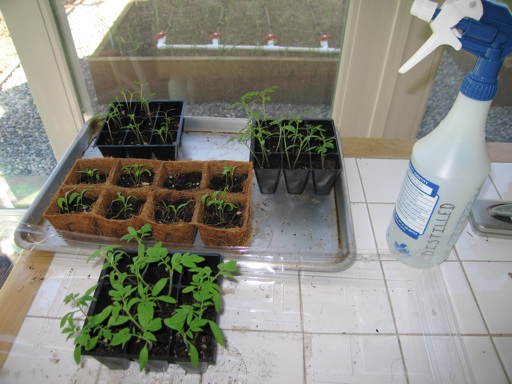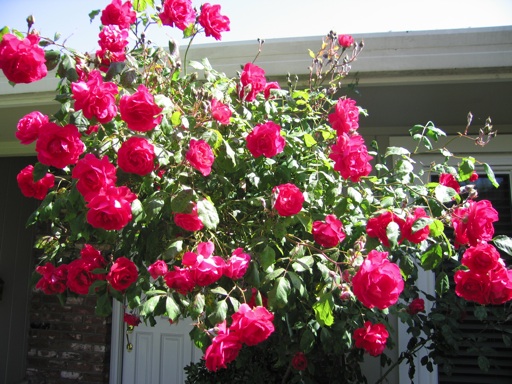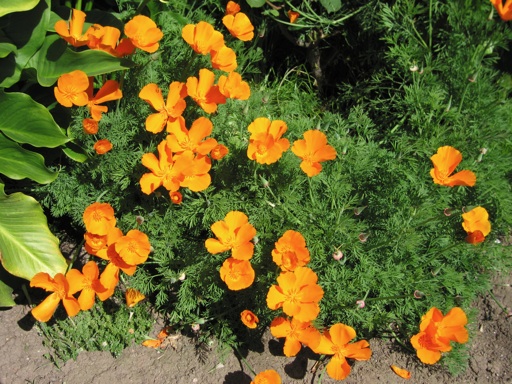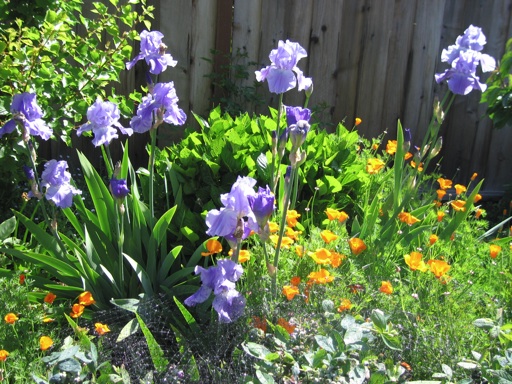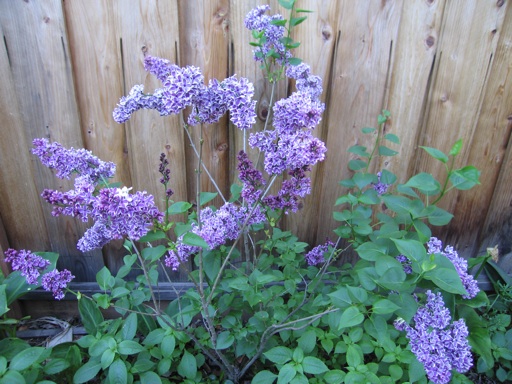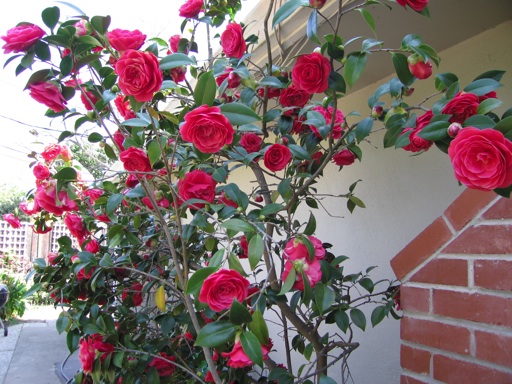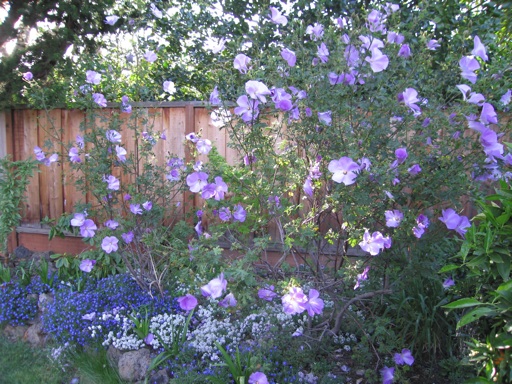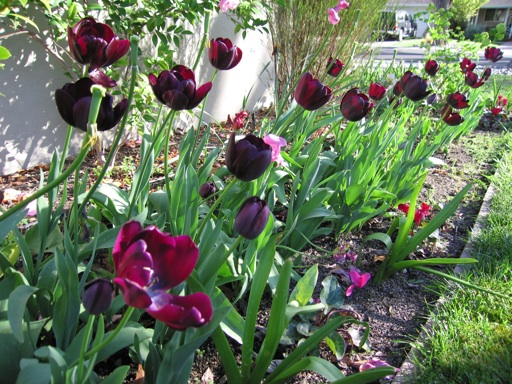Growing Vegetables by Seed
Last month, we planted several types of annual vegetables by seed indoors in containers. We planted corn, eggplant, tomato, habanero pepper, cantaloupe, and cucumber seeds. We have been watering the indoor seedlings by spraying them with distilled water in a spray bottle. Seedlings don’t need much water, and the spray bottle avoids overwatering and having to drain out excess water.
Most of the seeds we planted sprouted and grew well while they were indoors. However, as soon as we planted them outside in our raised beds, they started to have problems. Most of the tomato, cucumber, cantaloupe, and pepper seedlings that we transplanted outside a few weeks ago have died already, and the leaves of the corn seedlings are turning yellow.
I think that the problem lies with the seedlings not adjusting well to the sudden change in climate conditions from indoors to outdoors. The last few weeks our weather has been very changeable from warm sunny dry days and cool nights to cool rainy days like today, which is a big change from our stable indoor conditions. Several of the seedlings I transplanted outside during a dry sunny spell soon started to turn white as if they were getting sun burned, even though I was watering them every other day. Our low temperatures have not been dipping below about 45 degrees F, so I don’t think it was exposure to cold, although that could have been a factor as well.
I decided to do some research online, and I came across this website on hardening off transplanted seedlings from Washington State University. This website has some good pointers about gradually exposing your seedlings to strong direct sun and cold temperatures for a few hours a day. We still have some tomato and eggplant seedlings that I have not transplanted outside yet (see picture above). I intend to try gradually exposing our remaining seedlings to the sun and colder nights.
This website has some good suggestions, but I don’t agree with all of the advice on this site. One of the issues I have with the site’s advice is the minimum recommended temperatures for tomato, cucumber, and muskmelon (i.e., cantaloupe), which are 65, 60, and 60 degrees, respectively. In March, I planted 3 tomato transplants I bought from a nursery in one of our outdoor raised beds, and they are all growing rapidly even though the low temperatures here have consistently been below 50 degrees. In fact, we rarely have low temperatures above 60 degrees even in the summertime, and yet our tomato plants have thrived here in past years.
I had some left over cucumber and cantaloupe seeds. So last week, I planted them directly in our outdoor raised beds where the seedling transplants from indoors had just died. Those seeds have already sprouted despite the relatively cool temperatures. Most of these seedlings look great. None of them are looking sunburned or yellow even after a few warm sunny days last weekend. However, some of these new cucumber seedlings look like they have been picked at by birds or possibly eaten by snails, so I covered the bed with two layers of bird netting. I used this technique last year after the birds ate my first set of outdoor cantaloupe seedlings, and it worked to protect the second set of seedlings.
April 28 2010 | Vegetables | Comments Off on Growing Vegetables by Seed
